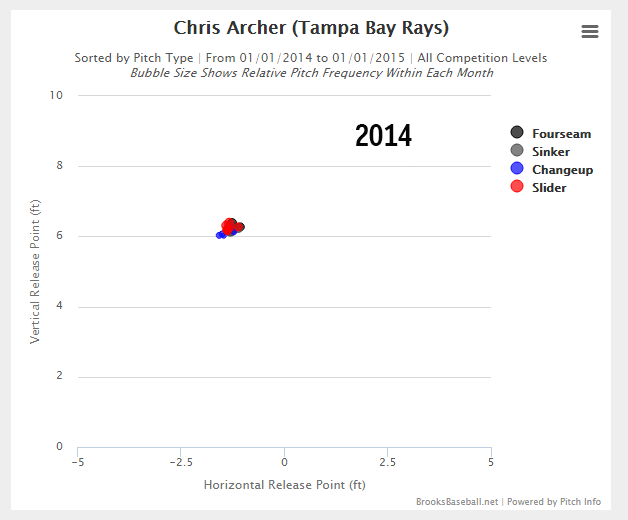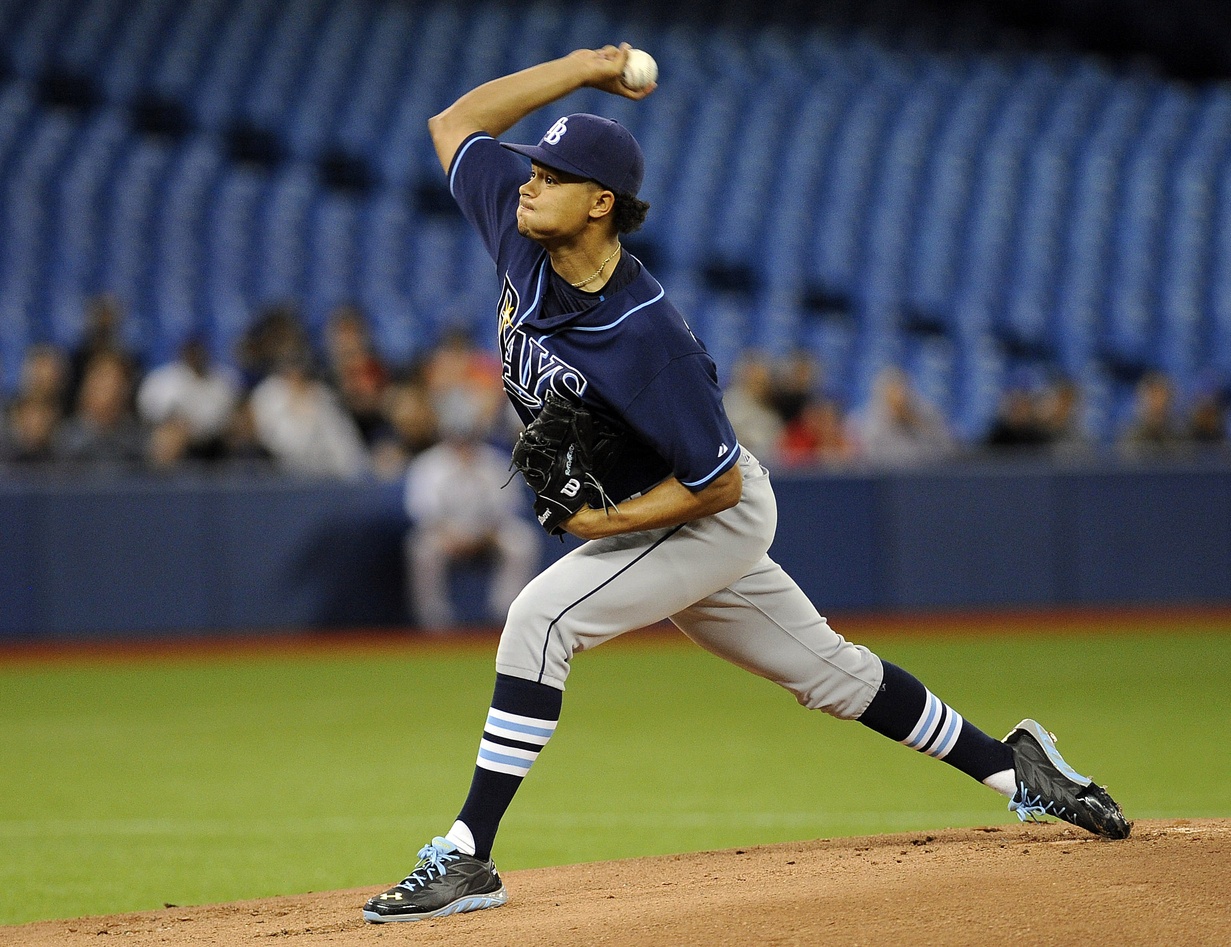Chris Archer had his second straight dominant performance, shutting down the Toronto Blue Jays on Thursday night and he can thank a big change in his game plan on the mound.
In Archer’s last two starts, he has allowed just three hits in 14 shutout innings with 16 strikeouts and just three walks.
We have seen Archer be dominant in the past. But Archer has made a change this season that hints his start isn’t fluky and Big Tree is ready to take his game to the next level and become one of the best pitchers in baseball.
Here is a look at Archer’s pitch selection so far in 2015 compared to 2014. To put it simply, Archer is leaning much more on his 4-seam fastball and slider this season and a lot less on his 2-seam fastball that has sinker tendencies.
But while Archer has increased his use of both the 4-seamer and the slider, it is the slider that has become one of the most valuable weapons in baseball.
Here are Archer’s pitch values (the 2-seam and 4-seam fastballs are grouped together). The numbers represent how many runs each pitch is worth above average, but that is not as important as just seeing how the values compare to each other and how they have changed over the years.
Look at that slider value this season. 3.82 runs! To put that in perspective, neither David Price nor James Shields ever had a pitch worth more than 3.0 runs in a single season. Price’s fastball never had a value greater than 0.97 runs per 100 pitches with the Rays and Shields’ change-up was only worth more than 1.82 runs in a single season once, and that came way back in 2007 when it was worth 2.79 runs per 100 pitches.
Of course, there are a lot of small sample size red flags here. We will have to see if he can keep it up. But the pattern is there. Archer has changed his attack and it is working big time.
For those that are curious about the technical aspect. There also appears to be a reason for why the slider is suddenly even more dominant.
Here is Archer’s release points from 2014 and 2015. It may be difficult to tell, but in 2015, the release point is higher and slightly to the right. In other words, he is throwing a little bit more over the top this season.

The result is that Archer’s slider has a little more horizontal movement this year and a little less vertical movement and batters are swinging and missing at the slider a whopping 21.5% of the time. That’s up from an already impressive 17.9% a year ago.
Again, small sample size, yada, yada, yada. But there are reasons to think this a new and even better Chris Archer in 2015.
 (1)Dislikes
(1)Dislikes (0)
(0)











4 Comments
Why would a more over the top release point result in more Horizontal movement (and why did the more 3/4 release have less horizontal)? That seems to be the opposite of what I would have thought would happen.
Whatever the cause, it is witchcraft out there.
A lot of what determines the movement of a pitch is based on how the last finger touching the ball affects the spin of the ball. When you come over the top (generally speaking) you're allowing the release point to create a situation wherein the last finger tip touching the ball (typically the middle finger) adds or changes the spin in such a way that it determines the pitch's trajectory, downforce, etc. The rest is physics beyond my scope of knowledge.
I just wonder who the poor sap is that has to track all this crap all game long???
. . .
Awesome insight, Cork. I was almost (almost) disappointed that you didn't have side by side charts showing variance between normal and short rest
Love the data.